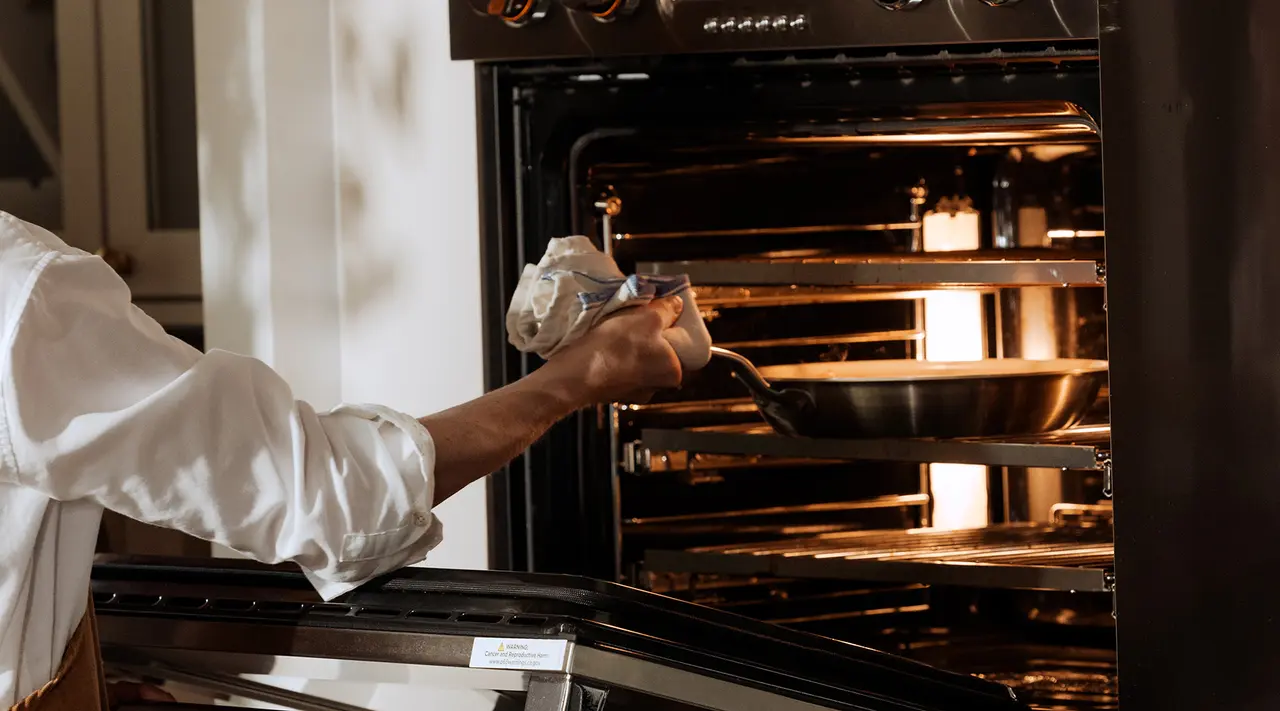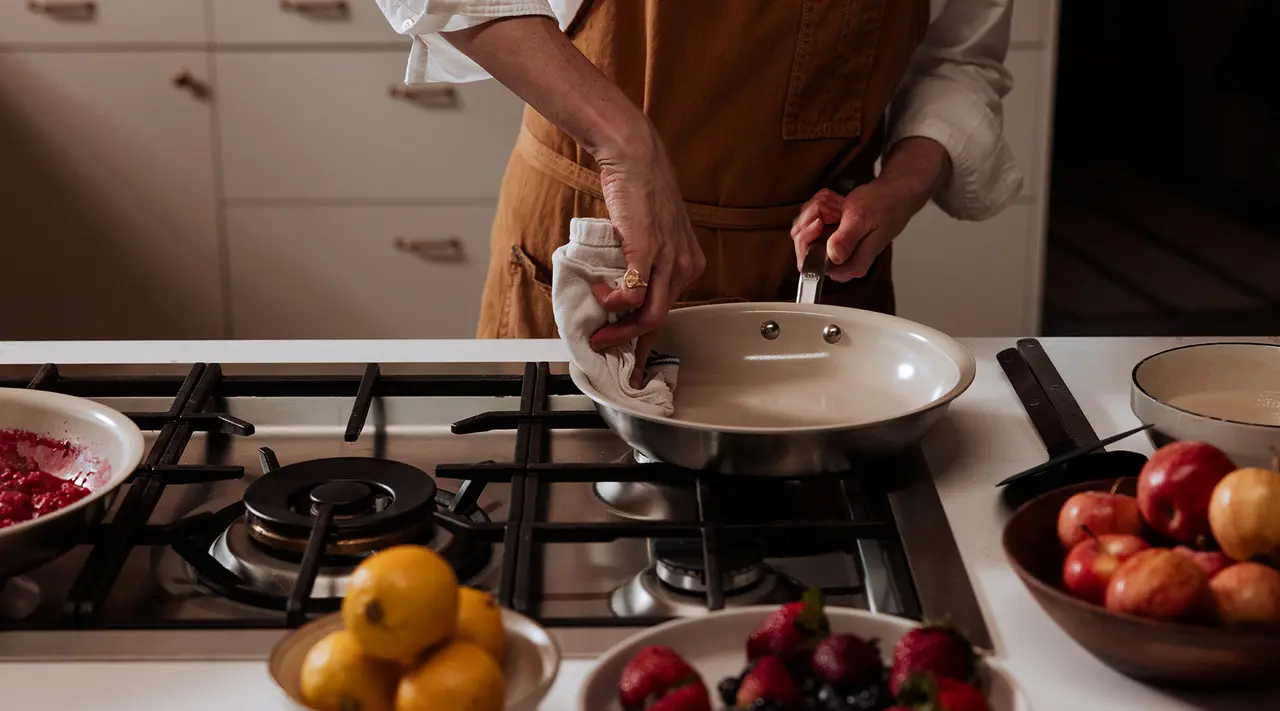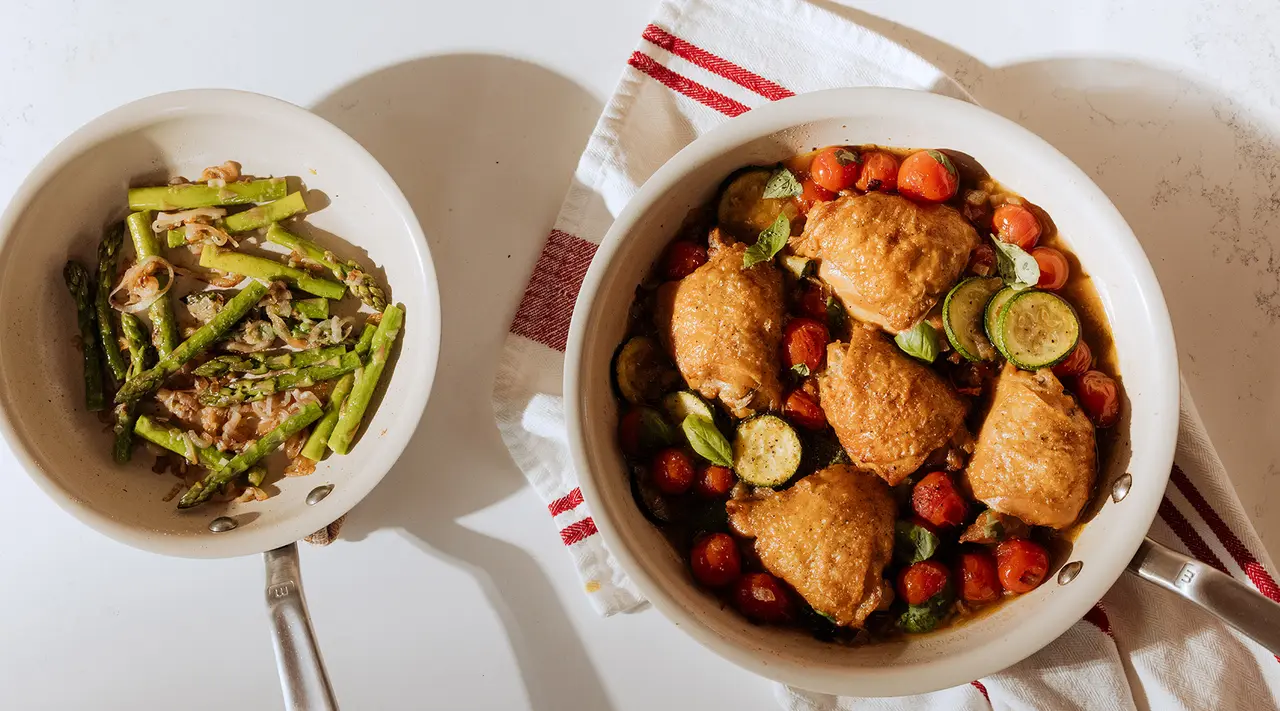Ceramic cookware is beloved for many reasons—namely, its coating that mimics the best parts of conventional non stick without the long, complicated history. While it’s a joy to cook with and eat off of, it's worth noting that no matter how well-crafted a ceramic pot or pan is, it’s still got a limited lifespan.
Here, we’ll go over everything you need to know about the expected lifespan of a ceramic pan (including our CeramiClad™ line) and how to prolong it.
Understanding Ceramic Non Stick Pans

While ceramic pans function similarly to traditional non stick, they’re actually constructed quite differently. The coating process remains largely the same, with a crucial difference: rather than materials used for coated non stick cookware, ceramic cookware is made by applying thin layers of a naturally-occurring coating to a metal base.
Every time ceramic cookware is heated, the ceramic "activates" and releases, creating a non stick cooking surface. Because these coatings are typically naturally-derived from materials like sand, it’s considered a healthier, more eco-friendly non stick alternative.
What Is the Expected Lifespan of Ceramic Pans?
Generally, ceramic cookware should last at least a year, and ideally up to 3 years. This number depends on the quality of the construction materials used along with how you cook with and care for it. For example, a gently used pan—i.e. one that you cook with infrequently or only over low heat—will last longer than one that’s used every night and/or over a high heat for extended periods of time.
Factors Affecting the Lifespan of Ceramic Pans

From the quality of materials to your own care and maintenance regimen, here are some of the main factors that can influence your pan’s lifespan and performance.
Quality of Materials
Like with most cookware—including traditional non stick—your pan will last longer if it was made using quality craftsmanship and materials )for example, with multiple layers of stainless clad and aluminum at its core, like our CeramiClad™ line).
This not only makes for a more durable pan that can stand up better to warping and other forms of damage, but a safer one with better heat conductivity and distribution.
Manufacturing Process
The manufacturing process for ceramic cookware—and most cookware—can vary quite a bit. Manufacturers in the E.U. and U.S. tend to abide by the strictest safety standards, hence why so many of our products are made in France, Italy, Sweden, and the U.S. Our CeramiClad™ line is proudly stamped, coated, and assembled in the USA—go behind the design for more details on how we worked with American manufacturers to make this first-of-its-kind coating.
Usage and Maintenance
A properly cared-for ceramic pan will definitely last longer than a neglected or abused one (even if it doesn’t last forever). If you’re frequently scouring a ceramic pan with harsh scrubbers, scratching it up with sharp-edged metal utensils, or running it through the dishwasher, you’re dramatically shortening your pan’s lifespan—not to mention, your pan won’t work as well.
How to Prolong the Lifespan of Ceramic Pans

While no ceramic pan will last forever, there are a few things you can do to extend its lifespan—starting first with proper care and maintenance.
Care and Maintenance Tips
One of the easiest ways to keep your ceramic pan in good shape is by always hand washing it. Similarly to non stick, running your pan through the dishwasher will damage the coating and potentially even warp the metal base.
Use a gentle sponge or dish cloth to wipe out your pan, and avoid steel wool or overly rough scrubbing pads. You should also dry it immediately after washing, and never leave dirty pans in the sink overnight—the longer you leave stuck-on food or other residue, the harder it’ll be to remove without scratching up the coating.
Once your pan is clean, make sure you’re storing it properly. If you’re not hanging it up or placing it in its own drawer, make sure to stack it carefully with other pans, placing a trivet, Pan Protector, or dish towel in between each layer to protect the coating from getting scratched.
Proper Cooking Techniques
Another way to take care of your pan is by following manufacturer guidelines when cooking. While this will differ from brand to brand, we recommend the same cooking approach as our ProCoat Non Stick for our CeramiClad™—always adding oil or other fat before heating, as well as cooking on a low or medium heat. Cooking with an empty pan, or over very high heat, can degrade the coating and make it less non stick over time.
The good news about our CeramiClad™ line is that, even once the ceramic coating wears off, you've still got a beautifully constructed pan with an even-heating stainless steel base to work with. It'll need additional oil, butter, or cooking fat, but will still cook just as well as it did before.
Ready to Cook?
There are plenty of reasons to be excited about ceramic cookware. And as long as you’re aware that the ceramic coating won't last forever, you should definitely feel free to enjoy these beautiful, lightweight alternatives to traditionally coated non stick cookware.
























